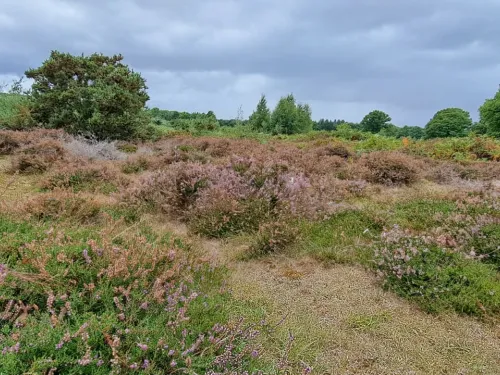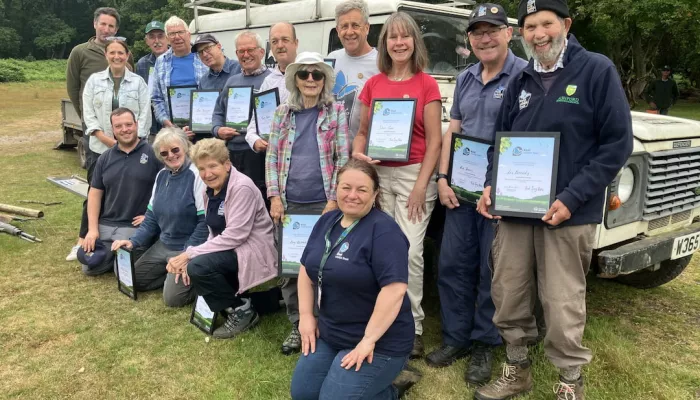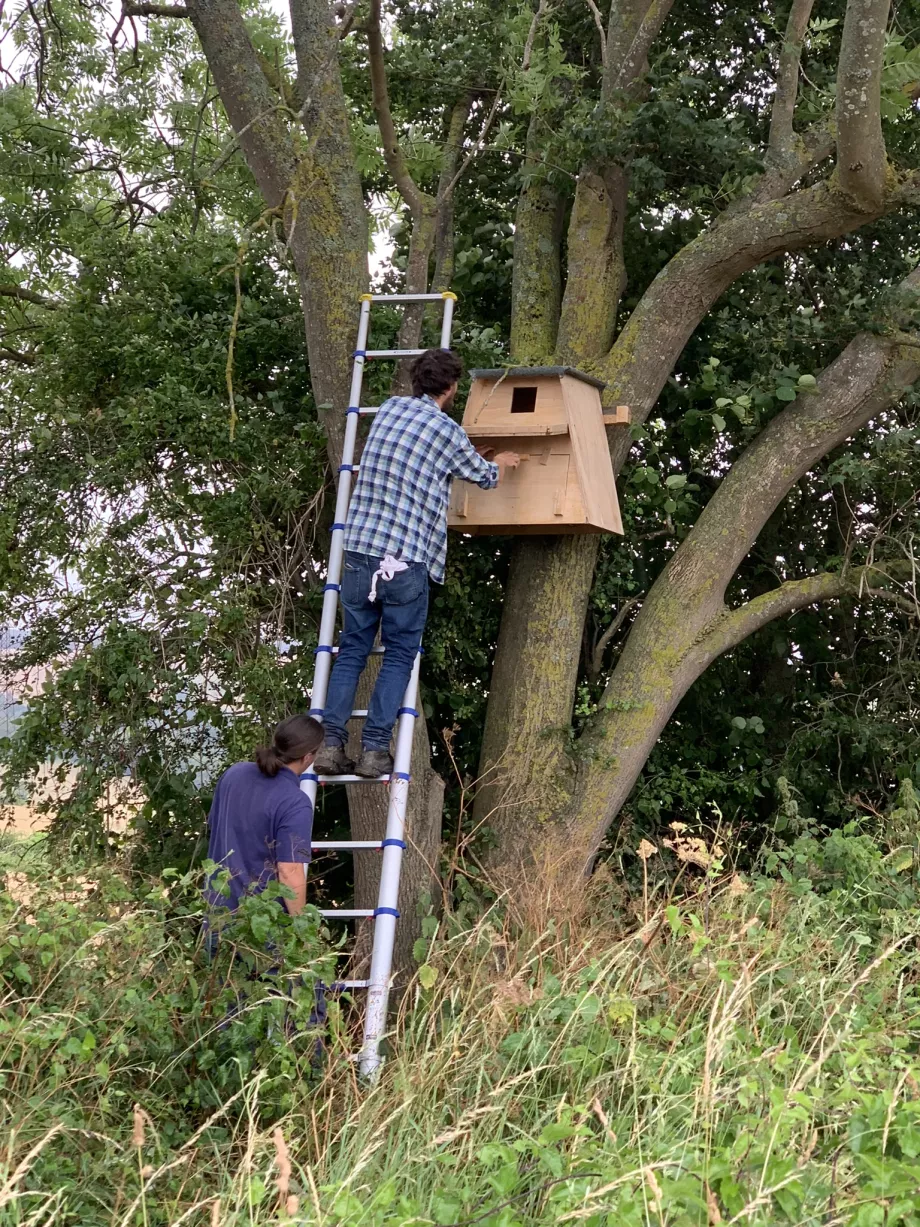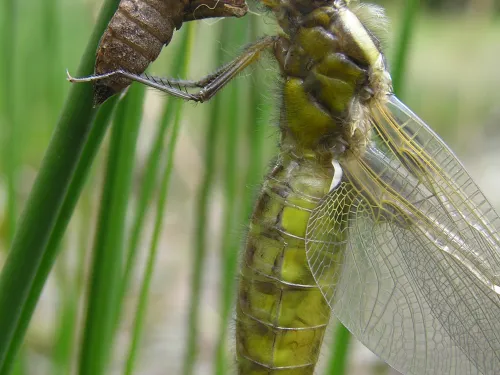
Hothfield Heathlands: A big thank you!
Area Manager, Ian Rickards, takes a moment to reflect on the work at Hothfield Heathlads throughout the summer months.

Kent Wildlife Trust celebrated National Volunteer Week in early June, saying: “Our volunteers are at the heart of Kent Wildlife Trust’s work. With their time, skills, passion, and energy we reach more people and work at greater scale and pace. Their contributions help ensure that Kent’s natural spaces are preserved for future generations.” The words became deeds in early July when Abbie and Becky from HR and Volunteer Management at HQ brought cake, badges and certificates to the Hothfield team and celebrated 151 years of volunteering between fourteen long-standing volunteers - sitting in my case, I’ve now been enjoying researching and writing these articles for eight years. Recent recruits also received welcome packs. A great new initiative.
In mid-July we enjoyed the hospitality of Reserve neighbours Kim and Peter for their delicious annual barbecue, gazing across two fields and a tennis court they have re-wilded on the Reserve boundary. Always botanising, Rob Insall and I found an airy annual in the pea family, smooth tare, Vicia tetrasperma, with tiny mauve flowers in ones or pairs, lightly tangled and scrambling with stitchwort among sturdier prairie perennials.

Barn owl boxes have been in place for many years, replacing or supplementing natural hollow trees or roosts in buildings. Owls often use two boxes, one for roosting and one for the brood. Observers are now waiting for owlets to appear, anxious about cold wet weather and predators. As owl nests are always deep, chicks must climb up inside to the exit hole, which means they are already strong enough to climb onto a branch. We hope.

© Richard Burkmarr
Recent sightings on the reserve include the ever-present raptors, buzzard and kestrel, and fledgling birds in deep cover hiding from the above. Also gatekeeper, meadow brown, small copper, skipper, comma, marbled white butterflies, cinnabar moth caterpillars on ragwort, a four banded longhorn beetle and various demoiselles and dragonflies. But as volunteer David Rayner said, ‘The ragwort should have loads of small solitary bees, hoverflies and beetles but the flowers are bare. The lack of insects this year is astonishing.’ We all grimly agreed from our own experience. I hope that the grass I have left to grow long and seed in my garden is sheltering many insect and moth eggs to produce a new generation. A very pregnant lizard was seen basking on a causeway, and will by now have produced up to eleven live young, having incubated the eggs in her body. It seems that the Hothfield lizards are as happy basking on the new wooden causeways as on the old composite ones.
The highland cattle are back after a break browsing sweeter pickings than here, where the grazing is rough and tough, moor grass, sedges, a bit of heather, a bit of gorse. But never bracken. One of the reasons we need volunteers and their scythes!

Area Manager, Ian Rickards, takes a moment to reflect on the work at Hothfield Heathlads throughout the summer months.

Pigs and tree pipits have returned to the reserve. Hazel and Beech, the pair of Large Black pigs who in the winter made their mark on the small compartment below the concrete causeway, returned to that fenced-in compartment in mid-July continuing, as Area…

Hothfield Heathland's bogs are one of only a handful of wet heaths in the Southeast, supporting a variety of dragonflies...